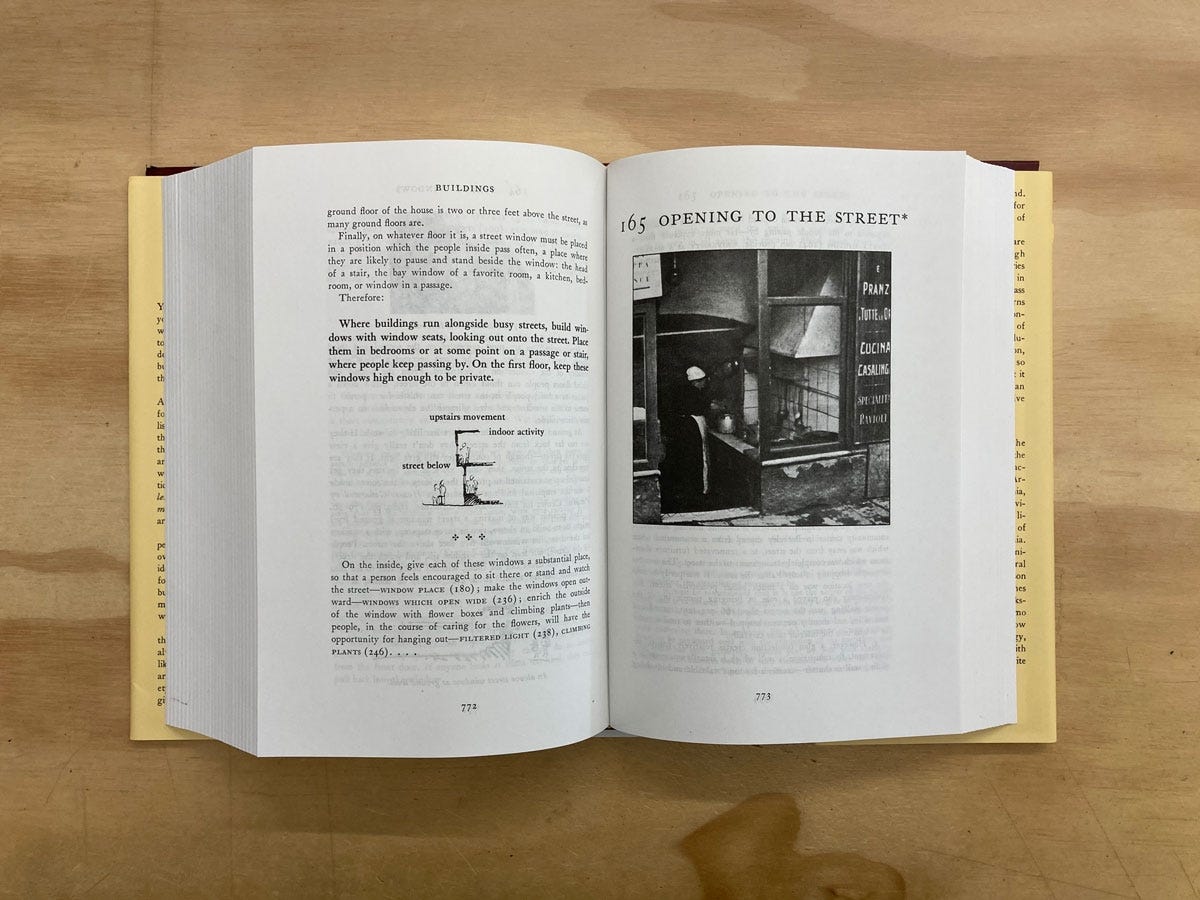#122 Finding Patterns 🧩
Fooling algorithms and designing better buildings
This week’s Design Lobster is seeing patterns everywhere. We’re hearing the story of how design patterns became such an influential concept in architecture and software, and we’re getting our paints out and trying out some make-up patterns designed to help you elude facial recognition cameras 💄
👋 I’d like to especially welcome all the new readers who have joined recently. I’m not sure if you found me via another newsletter or are are new to Substack (perhaps fresh from all the madness at Twitter). In any case, it’s great to have you here!
✨Enjoying Design Lobster? Please share it with a friend, colleague or fellow designer.
Question: What are “design patterns” and why do they matter?

The Timeless Way of Building and A Pattern Language, published between 1977 and 1979, were the the culmination of architect Christopher Alexander’s research into the fundamental elements of successful architecture and urbanism. Over a period of several years, he and his collaborators at the Berkley Center for Environmental Structure collated a set of 253 “patterns” that could be used by anyone to create spaces and neighbourhoods that promoted wellbeing and healthy relationships among those who lived between them.
The elements of this language are entities called patterns. Each pattern describes a problem that occurs over and over again in our environment and then describes the core of the solution to that problem, in such a way that you can use this solution a million times over.
—Christopher Alexander, A Pattern Language
These patterns ranged from the urban-scale “Lace of Country Streets” down to scale of a room; “Bed alcove” or “Child caves” for example – and collectively they contain a huge amount of practical wisdom about what makes a place that is good to live in.
However, the concept of a “design pattern” ended up having a life far beyond its architectural origin. In the 1990’s it was to become hugely important in the emerging discipline of software design. Ward Cunningham, a software engineer and creator of the first online wiki was inspired by Alexander’s work to start documenting successful software patterns publicly, so that other engineers could re-use them in their projects. Over time, the concept has gained greater and greater currency and is the foundation of contemporary thinking about design systems.
In its translation to this new field, some of the generative intent of Alexander’s work has perhaps been lost. Often, software design systems resemble more of a catalogue than a language. I hope as we continue to evolve these systems we can steer closer to his original vision.
Design takeaway: Which fundamental patterns can you detect in your design?
Object: CV Dazzle make-up

This project by artist Adam Harvey was inspired by a type of naval camouflage called Dazzle, which used cubist-inspired designs to visually break apart battleships –concealing their size and position. In a similar way, CV Dazzle uses asymmetric hairstyling and angular make-up to break apart the continuity of a face, making it more difficult for facial-recognition algorithms to detect and identify you.
These patterns take advantage of how the Viola-Jones Haar Cascade computer vision algorithm relies on certain high-contrast patterns to detect the presence of a face in video footage. By interrupting key planes like the nose, forehead and eyes, the algorithm can effectively be rendered blind.
However, facial-recognition technology has not stood still and new techniques like HOG (Histogram of Oriented Gradients) cannot be fooled by these patterns of face-paint. I take a perverse Gibsonian thrill in wondering what weird new forms of personal style might evade this latest algorithm, whilst at the same time wholeheartedly hoping that the technology gets banned altogether from public spaces.
Design takeaway: Does your design help maintain the privacy of those using it?
🌚 In Design Lobster #41 we admired a camouflaged power station
Quote: “Understanding of life begins with the understanding of patterns.”
– Fritjof Capra, scientist and author
Fritjof’s book The Tao of Physics became a bestseller in the 1970’s and since then he has written many more books on the connections between fundamental physics and Eastern mysticism. This quote contains a reminder for designers too: we should always seek to understand the deeper patterns in a situation or context before we start to design a solution.
Hope you spot some patterns this week,
Ben 🦞
Enjoyed this week’s Design Lobster? Let me know by clicking the heart button ❤️
👇


Thanks. Have believed for a long while there is a need for the anti-face recognition designs. Perhaps it will serve as the new & fashionable masks.